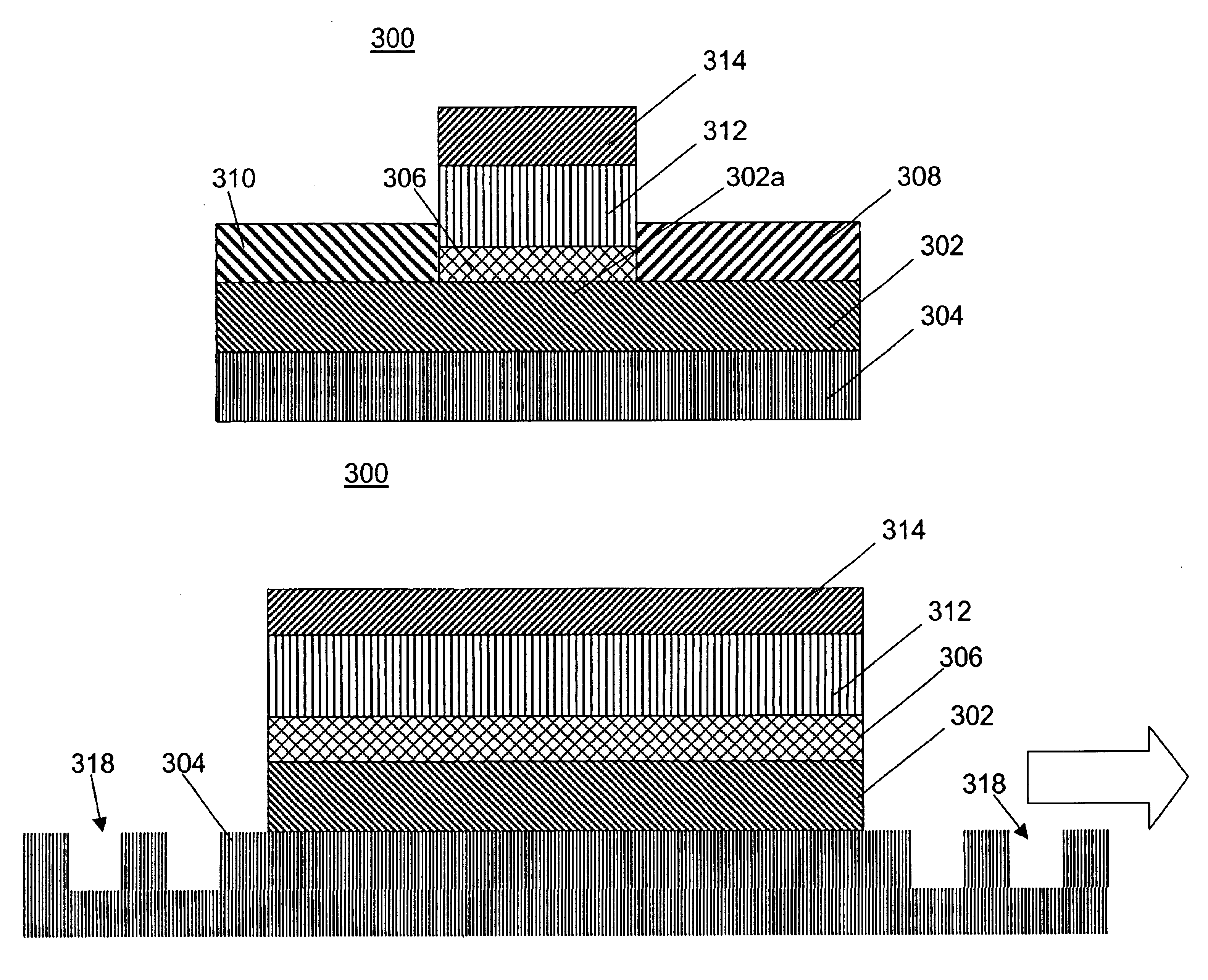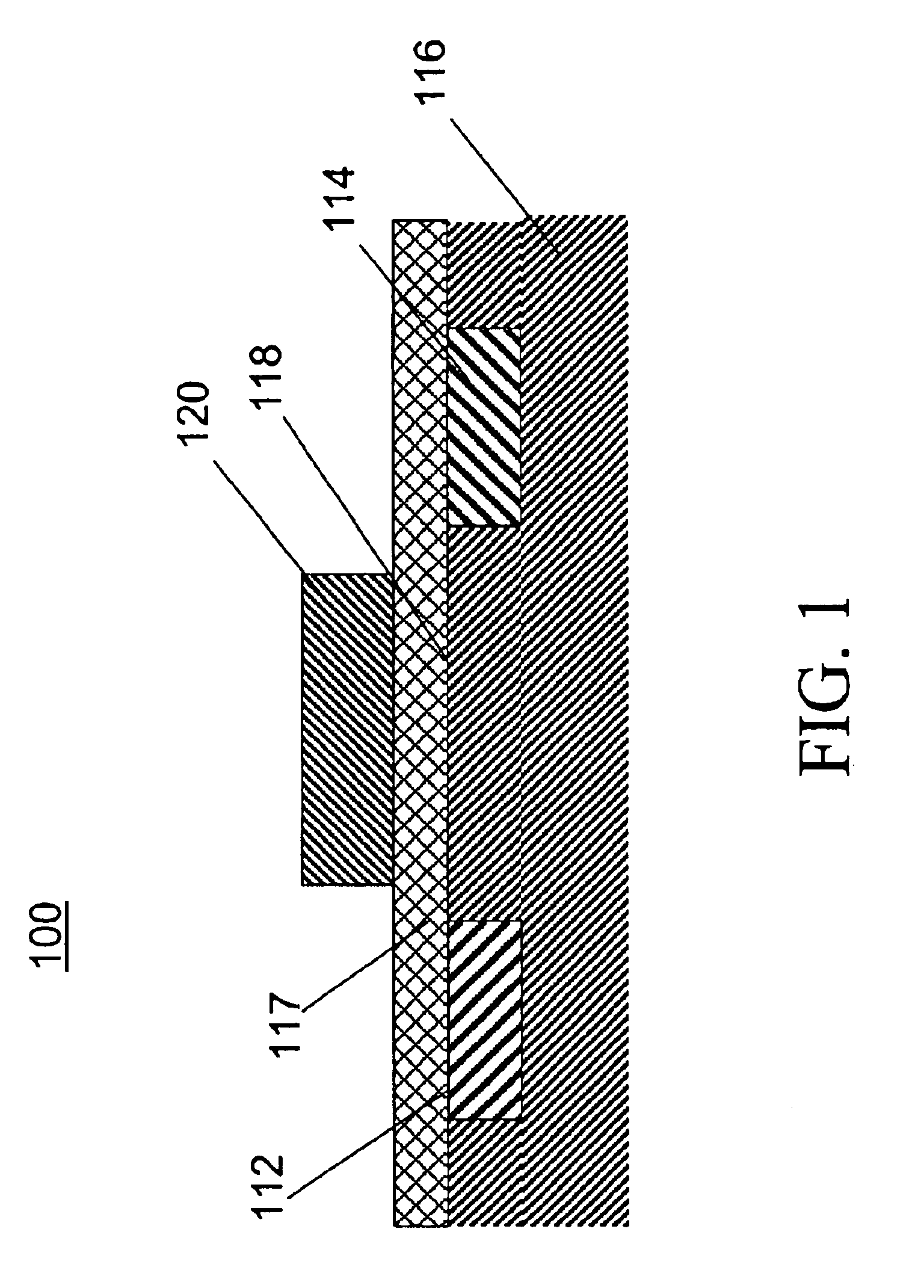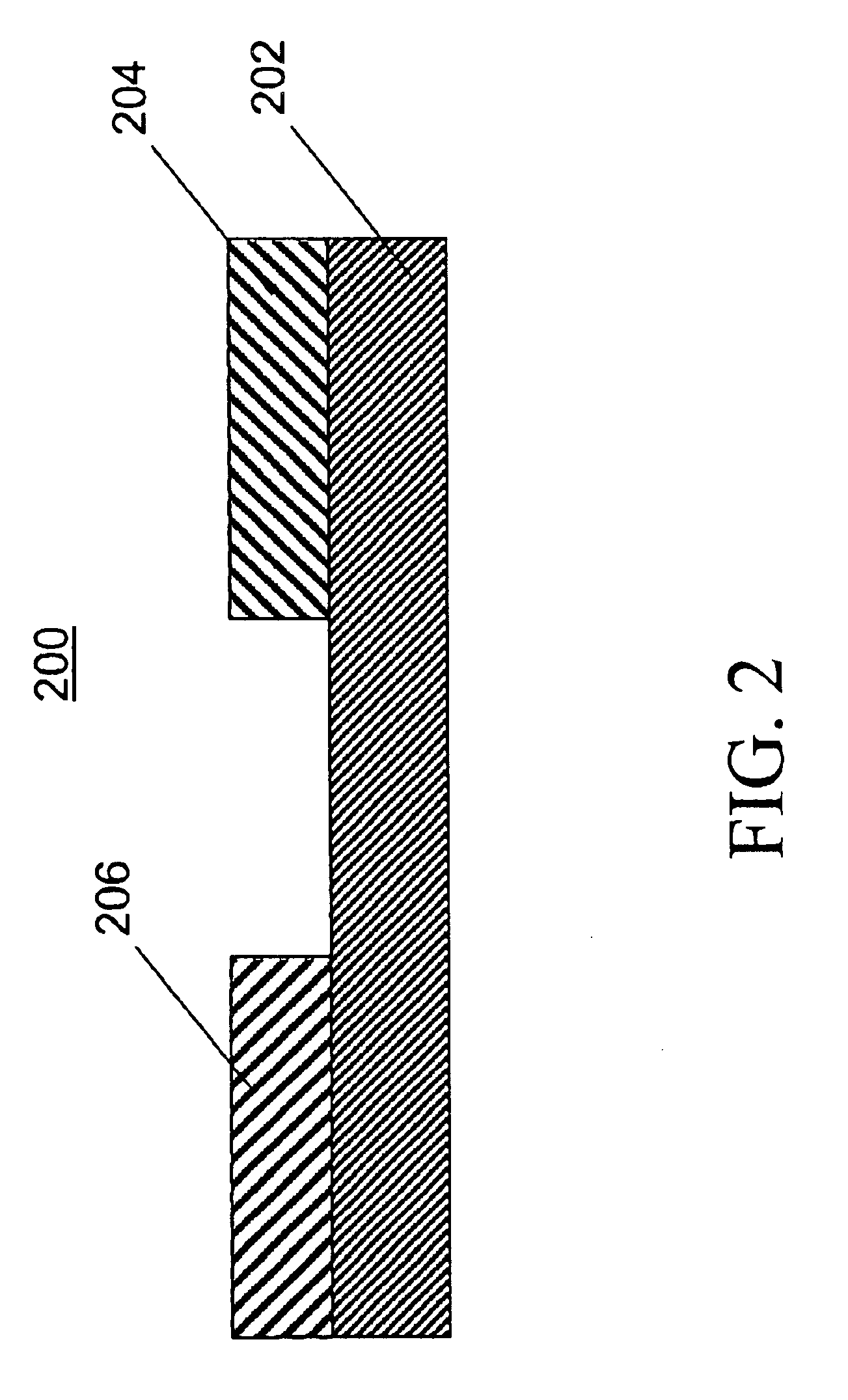Organic light emitting devices based on the formation of an electron-hole plasma
a light-emitting device and electron-hole plasma technology, applied in the direction of discharge tube luminescnet screen, active medium material, semiconductor lasers, etc., can solve the problem of limiting quantum efficiency, singlet-polaron quenching limits the quantum efficiency, and the highest efficiency of organic electroluminescence is typically realized
- Summary
- Abstract
- Description
- Claims
- Application Information
AI Technical Summary
Benefits of technology
Problems solved by technology
Method used
Image
Examples
Embodiment Construction
[0039]Generally, devices according to the invention exploit the formation of an electron-hole plasma (EHP) within an organic layer of the device. The embodiments disclosed herein provide technologically applicable structures based preferably on crystalline or amorphous organic thin films or polymers that maximize electrical (i.e., carrier) confinement, optical (i.e., modal) confinement, and photon confinement (i.e., feedback) in the device.
[0040]FIG. 2 depicts a light emitting device 200 according to the invention. As shown, the device 200 includes an organic thin film layer 202, having a preferred thickness on the order of about 50 nm. Typical dimensions for a device according to the invention are 5 mm×5 mm, although smaller devices, such as 0.5 mm×0.5 mm, are possible. The device also includes a first electrical contact 204 that is adapted to inject electrons into the organic layer 202, and a second electrical contact 206 that is adapted to inject holes into the organic layer 202....
PUM
 Login to View More
Login to View More Abstract
Description
Claims
Application Information
 Login to View More
Login to View More - R&D
- Intellectual Property
- Life Sciences
- Materials
- Tech Scout
- Unparalleled Data Quality
- Higher Quality Content
- 60% Fewer Hallucinations
Browse by: Latest US Patents, China's latest patents, Technical Efficacy Thesaurus, Application Domain, Technology Topic, Popular Technical Reports.
© 2025 PatSnap. All rights reserved.Legal|Privacy policy|Modern Slavery Act Transparency Statement|Sitemap|About US| Contact US: help@patsnap.com



